With the registry of first cases in late 2019, the world found itself gripped by the COVID-19 pandemic in matters of weeks. As countries scrambled their resources to tackle the situation, it was hardly a feat of imagination to see how it was going to affect education globally, much more so in countries where education service was already in trouble with deep rooted inequities and inefficiencies. Education in Pakistan, too, went into a tailspin as schools were closed in a hurry in March 2020, leaving decision makers, practitioners, parents, schools and students in a complete disarray. The school closures put hundreds of thousands of students at risk of dropping out. Various governments and private enterprises resorted to digital learning programs such as TeleSchool and TeleTaleem to ensure some level of learning continued at homes. Various private educational organizations used digital platforms such as Zoom and Google Classrooms to deliver instruction and content to their students. What ensued in the aftermath was chaos at best as teachers, with no training and preparation whatsoever, struggled to meet the challenges of online teaching. Parents were equally caught off-guard, especially those at the lower rungs of socioeconomic ladder, when schools expected of them to take an active role in helping their children learn from home. In this backdrop, this working paper explores the possibilities and limits in the use of technology as a driver for addressing educational needs in the country in pandemic times.
We specifically explore, ‘what possibilities existed for tech-based solutions to promote learning in pandemic times in Pakistan.’ It adopts a quantitative descriptive approach by tapping into the most current data from the Pakistan Social and Living Standards Measurement (PSLM) survey 2018-19 and the population census 2017. We also use ASER survey data in combination to present an overview of how the pandemic could have deepened the learning crises that was already in a dismal state of affairs. The working paper will first give a brief discussion of the hypotheses and methodology. This will be followed by results, discussions and conclusions.
Background and Hypotheses
According to the World Bank (2021), at one time during the pandemic, 1.6 billion students were out of school due to school closures, a figure that stood a whopping 258 million before the pandemic. Many of these students came from the developing world. Pakistan, with its over 22 million children already out of school has been a significant contributor in the number. We see that while governments and private educational service organizations initiated their tech based solutions to provide some level of learning during the pandemic, such efforts seem paled by the deep digital divides that this study highlights in one of the most differentiated education ecosystem in the world. In the framework of equity in educational provisions, we specifically explored three hypotheses. First, we hypothesize that the digital penetration in Pakistan is uneven across provinces. Second, we hypothesize a huge SES effect in digital penetration. Third, we assume that the first two divides compound the effects in a third-level divide i.e., the failure of tech-based solutions to provide learning experiences to those who needed support the most.
Methods
We employed three data sets in the statistics presented in this paper. First, we use most current data from the Pakistan Social and Living Standards Measurement (PSLM) 2018-19 to pull out information on internet access, smartphone use and television use across districts and socioeconomic status in Pakistan. Second, we use population census 2017 to estimate on the demand for education (proportion of school going children) across districts in Pakistan. Third, ASER 2019 and PSLM 2018-19 data is used to present learning levels across SES lines and internet access at district level. Given the primacy of the concern, we provide descriptive explanations of the digital divide that majority of the learners in Pakistan experience. We do this by doing correlations wherever they make sense and present our preliminary findings in graphical representations.
Findings & Discussion
In this section, we give key findings based on the descriptive analyses of the data from PSLM 2018-19 and population census 2017. First we give a macro-level profile of the digital penetration in Pakistan. Second, we give how the first digital divide (Attewel, 2001; van Deursen & van Dijk, 2018; Zhao & Elesh, 2007) reflects across the socio-economic strata. Third, we present the more granular information on how the digital divide reflects in terms of the use of digital media, primarily TV and Internet, to promote learning amid the pandemic in Pakistan.



Blog Comments
Lorem Ipsum is
Lorem Ipsum is simply dummy text of the printing and typesetting industry. Lorem Ipsum has been the industry's standard dummy text ever since the 1500s, when an unknown printer took a
dummy text of the printing and typesetting industry
Lorem Ipsum is simply dummy text of the printing and typesetting industry. Lorem Ipsum has been the industry's standard dummy text ever since the 1500s,
testing 2
industry. Lorem Ipsum has been the industry's standard dummy text ever since the 1500s,
testing dummy
Lorem Ipsum is simply dummy text of the printing and typesetting industry. Lorem Ipsum has been the industry's standard dummy text ever since the 1500s,
first testing
Lorem Ipsum is simply dummy text of the printing and typesetting industry. Lorem Ipsum has been the industry's standard dummy text ever since the 1500s,
standard dummy text ever
industry. Lorem Ipsum has been the industry's standard dummy text ever since the 1500s,
testing 3
industry. Lorem Ipsum has been the industry's standard dummy text ever since the 1500s,
testing 4
Lorem Ipsum is simply dummy text of the printing and typesetting industry. Lorem Ipsum has been the industry's standard dummy text ever since the 1500s,